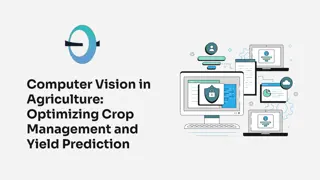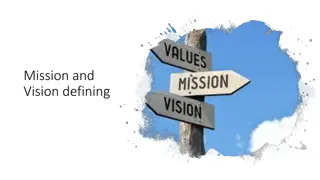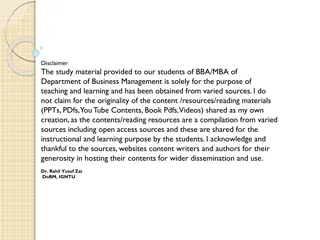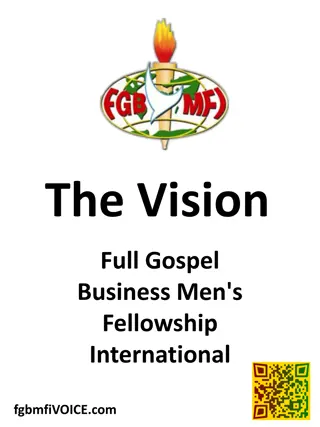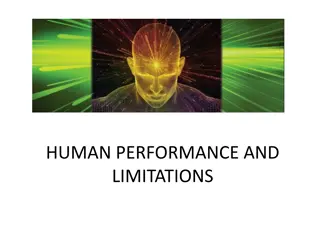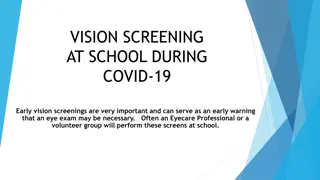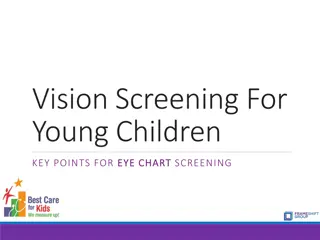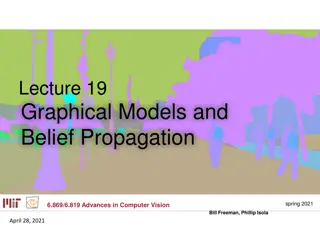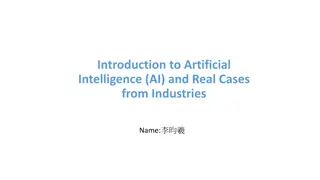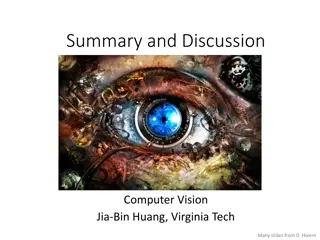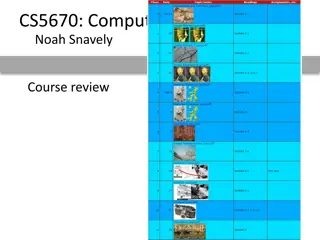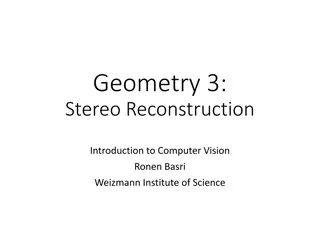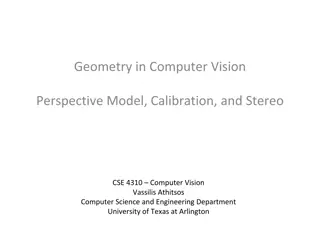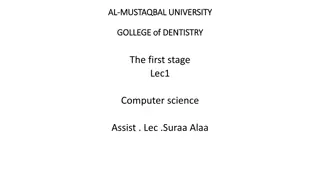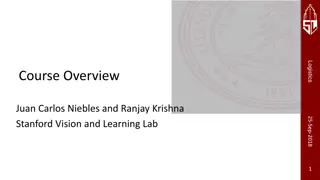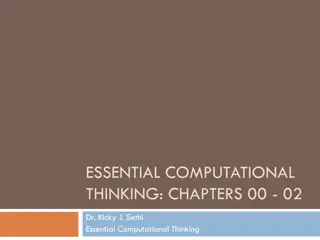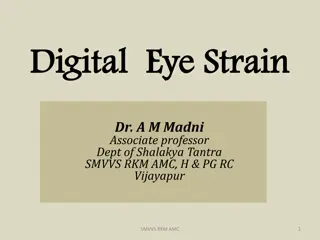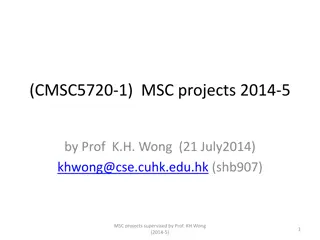Rescue Drone: Increasing Autonomy and Implementing Computer Vision
Focuses on developing a rescue drone with increased autonomy and implementing computer vision for advanced object detection. The team, consisting of Cody Campbell (Hardware Engineer), Alexandra Borgesen (Computer Engineer), Halil Yonter (Team Leader), Shawn Cho (Software Engineer), Peter Burchell (M
78 views • 44 slides
Understanding Computer Organization and Architecture
A computer system is a programmable digital electronics device that processes data as per program instructions to provide meaningful output. It comprises hardware and software components, with hardware being the physical parts and software essential for driving the hardware. Computer organization fo
14 views • 71 slides
Applications of Computer Vision in Various Fields
The Computer Vision domain of Artificial Intelligence allows machines to process and analyze visual data through algorithms. From facial recognition for security and attendance systems to face filters in modern apps, and from Google's Search by Image feature to applications in retail, self-driving c
3 views • 16 slides
Computer Vision in Agriculture: Optimizing Crop Management and Yield Prediction
In recent years, the agriculture industry has witnessed a significant transformation fueled by technological advancements. Among these innovations, computer vision has emerged as a game-changer, offering unparalleled opportunities to optimize crop management and enhance yield prediction. Leveraging
7 views • 19 slides
Designing a Vision Board for Personal and Academic Success
Explore creating a vision board to visualize and achieve your personal and academic goals. Reflect on your aspirations, find inspiration, and bring your vision to life through images and words. Learn how to design a vision board, map out your goals, and regularly revisit it to stay motivated and foc
0 views • 11 slides
Overview of Computer Hardware Components and Software Functions
Computer hardware components such as monitor, CPU, mouse, and projector are essential physical parts of a computer system, while software includes intangible programs like operating systems and utility software. Hardware components perform tasks like displaying data, processing information, and prin
8 views • 9 slides
Understanding Mission and Vision Statements in Organizations
A mission statement encapsulates an organization's core purpose and objectives, while a vision statement outlines aspirations and future direction. The mission focuses on "what" and "how," while the vision emphasizes the "why." Combining both statements creates a unified reason for existence, guidin
1 views • 39 slides
Understanding Computer Vision and Image Processing
Introduction to the fields of computer vision and image processing, exploring their differences and how they intertwine. Computer vision focuses on processing images for computer use, while image processing enhances images for human consumption. Topics include image analysis, restoration, enhancemen
1 views • 100 slides
Understanding Computer Architecture and Organization
Computer architecture and organization are fundamental aspects of computing systems. Computer architecture focuses on the functional design and implementation of various computer parts, while computer organization deals with how operational attributes come together to realize the architectural speci
3 views • 40 slides
Understanding Computer System and Organization
Computer Organization involves the logical structure of a computer, defining the interconnections of components for optimal performance. Computers process data through an Input-Process-Output cycle, with input, processing, and output units working together. The characteristics of a computer include
1 views • 20 slides
Wales Vision Strategy Overview
Wales Vision Strategy encompasses a comprehensive approach to vision care and services in Wales. It involves multiple stakeholders and partners to ensure individuals with eye conditions receive timely treatment and support. The strategy aims to empower individuals to understand their eye health, acc
1 views • 8 slides
Computer Science Department Information and Courses Offered
The Computer Science Department provides information on courses offered for GCSE or BTEC qualifications, specifically focusing on the AQA GCSE in Computer Science. The course equips students with valuable thinking and programming skills essential in the modern workplace, covering key concepts and pr
3 views • 7 slides
Understanding the Importance of Vision in Business Management
Vision plays a crucial role in guiding organizations towards their desired future. It is a mental perception of the environment an entity aspires to create. Developing and sharing a vision across an organization fosters long-term thinking, risk-taking, and a shared sense of purpose. The benefits of
7 views • 41 slides
Anatomy of a Computer System: Hardware Components and Functions
A typical computer system consists of hardware and software working together to perform various computational tasks. The hardware components include the central processing unit (CPU), input/output devices, storage units, and the motherboard. The CPU acts as the main brain of the computer, performing
6 views • 6 slides
Understanding Computer Processing Systems
Computer processing systems consist of various components such as the control unit, ALU, input unit, CPU, output unit, memory, and more. Input devices feed raw data to the computer, while output devices provide processed information. The CPU plays a crucial role in executing instructions and data pr
0 views • 13 slides
Vision and Strategy for Sustainable Development in Lao PDR
Department of Planning and Cooperation under the Ministry of Natural Resources and Environment in Vientiane, Lao PDR, has set a vision towards 2030 with a strategy for 2025 to make Lao PDR green, clean, and beautiful. The focus is on green economic growth for sustainable development and climate chan
0 views • 26 slides
Understanding Dental and Vision Benefits for Wisconsin State Employees
Explore the dental and vision benefits available to Wisconsin State employees, including details on uniform dental benefits, coverage options, annual maximums, orthodontic services, and waiting periods. Learn about the two dental plans offered by EPIC in Wisconsin, coverage percentages for basic and
1 views • 28 slides
**Exploring Inquiry-Based Learning in Computer Science Education**
Inquiry-based learning (IBL) in computer science classrooms focuses on fostering communication, collaboration, decision-making, and problem-solving skills among students. The approach involves students constructing knowledge through independent, active activities based on real-world experiences. How
0 views • 18 slides
Evolution of Algorithms and Computer Science Through History
The history of algorithms and algorithmic thinking dates back to ancient times, with the development of general-purpose computational machines by Charles Babbage in the 19th century marking a significant advancement. The term "computer science" emerged in 1959, encompassing theoretical computer scie
1 views • 39 slides
The Vision of Full Gospel Business Men's Fellowship International
The Full Gospel Business Men's Fellowship International, founded by Demos Shakarian in 1951, originated from a divine vision he received in 1952. Despite initial struggles and low attendance, Demos was shown a vision of transformed lives and worldwide impact. The fellowship, open to all, focuses on
0 views • 9 slides
Developing Vision and Goals for Personal and Organizational Growth
Explore the importance of visionary leadership in developing a clear vision and goals for personal and organizational success. Understand how vision defines the desired future state, sets the direction, and separates leaders from followers. Learn the significance of aligning personal vision with org
1 views • 21 slides
Overview of Computer Input and Output Devices
Input devices of a computer system consist of external components like keyboard, mouse, light pen, joystick, scanner, microphone, and more, that provide information and instructions to the computer. On the other hand, output devices transfer information from the computer's CPU to the user through de
0 views • 11 slides
Understanding Human Vision and Eye Function
Human vision is essential for many tasks, especially in professions like aviation maintenance technicians. Proper lighting and eye protection are crucial for optimal vision. The eye functions like a camera, with components including the cornea, iris, lens, and retina. Each part plays a vital role in
0 views • 36 slides
Importance of Vision Screening for Children during COVID-19
Early vision screenings are crucial for identifying potential vision issues in children, especially during the COVID-19 pandemic. Problems like myopia and amblyopia can impact a child's learning ability if left untreated. It's essential to use proper tools and techniques to ensure accurate results a
0 views • 9 slides
Alaska Vision Screening Guidelines for School Children
Learn about the State of Alaska's vision screening guidelines for the pre-school and school population, including recommended tests, equipment, procedures, and referral criteria. Discover the importance of screening for vision problems like amblyopia, the leading cause of childhood blindness. Unders
2 views • 85 slides
Importance of Vision Screening for Young Children
Understanding the critical development of vision in young children is crucial, as vision conditions can go undetected but have significant impacts. Early screening helps in identifying refractive errors, amblyopia, and strabismus for successful treatment. Prevalence statistics highlight the importan
0 views • 23 slides
Understanding Computer Graphics: An Overview
Computer graphics involves creating images and animations using a computer through hardware and software systems. It has evolved significantly over the years, with advancements in generating various types of computer graphics. Learn about the basics of computer graphics, including digital image repr
0 views • 15 slides
Understanding Computer Crimes and Prevention Strategies
Computer crimes involve illegal acts utilizing computer systems, leading to various consequences. This lecture covers the types of computer system attacks, motives behind computer crimes, costs, prevention strategies, and reflection on the discussed topics. It emphasizes the increasing scope of comp
1 views • 20 slides
Understanding Night Vision Technology and Its Applications
Night vision technology enables vision in the dark, initially developed for military use. This seminar explores the types of night vision, working principles, devices, generations, applications, and conclusions. It delves into biological and technical night vision, highlighting the ways they operate
0 views • 21 slides
Graphical Models and Belief Propagation in Computer Vision
Identical local evidence can lead to different interpretations in computer vision, highlighting the importance of propagating information effectively. Probabilistic graphical models serve as a powerful tool for this purpose, enabling the propagation of local information within an image. This lecture
0 views • 50 slides
Exploring Artificial Intelligence and Computer Vision in Industries
Delve into the world of Artificial Intelligence (AI) with real industry cases. Learn about Natural Language Processing (NLP) and Computer Vision through examples and practical exercises. Understand NLP's use of probability statistics, intent, utterance, entity, and session elements. Discover how Com
0 views • 13 slides
Fundamentals of Computer Vision and Image Processing
Fundamentals of computer vision cover topics such as light, geometry, matching, and more. It delves into how images are recorded, how to relate world and image coordinates, measuring similarity between regions, aligning points/patches, and grouping elements together. Understanding concepts like shad
0 views • 29 slides
Comprehensive Overview of Computer Vision: Topics, Techniques, and Applications
This content provides an extensive review of various topics in computer vision, ranging from image processing and 2D/3D geometry to recognition problems and machine learning basics. It covers key concepts such as filtering, edge detection, feature matching, geometric transformations, camera perspect
0 views • 77 slides
Introduction to Stereo Reconstruction in Computer Vision
This material covers the fundamental concepts in stereo reconstruction, including the pinhole camera model, perspective projection, epipolar geometry, essential and fundamental matrices, camera calibration, homography, and projective geometry. It also discusses stereo vision and 3D reconstruction fr
0 views • 41 slides
Understanding 3D Information in Computer Vision
Exploring the importance of estimating 3D information in computer vision applications, such as perspective camera models, stereo vision, and the transition from 2D to 3D representations. It discusses the need for detailed 3D data for tasks like object manipulation, obstacle detection for unmanned ve
0 views • 118 slides
Overview of Computer Science at Al Mustaqbal University College of Dentistry
Al Mustaqbal University College of Dentistry offers courses in computer science, covering topics like data reception, processing, storage, and output. The curriculum includes the study of computers as electronic devices, data and information, computer features, operating systems like Windows, and ta
0 views • 10 slides
Computer Vision Course Overview at Stanford University
Explore the logistics of the Computer Vision course at Stanford University presented by Juan Carlos Niebles and Ranjay Krishna from the Stanford Vision and Learning Lab. The overview covers the course agenda, instructor details, office hours, contacting TAs, syllabus, grading policy, and the overall
0 views • 15 slides
Understanding the Essence of Computer Science and Computational Thinking
Delve into the fundamentals of Computer Science and Computational Thinking through chapters discussing the nature of science, predictions in physics, and the distinction between Computer Science and Computer Information Systems. Explore the relationships between Math, Physics, and Computer Science i
0 views • 29 slides
Understanding Digital Eye Strain and Computer Vision Syndrome
In today's digital age, the prolonged use of electronic gadgets has led to a rise in digital eye strain or Computer Vision Syndrome. Symptoms include eyestrain, headaches, blurred vision, and more. Factors like poor lighting, glare, and improper viewing distances contribute to this issue. Recognizin
0 views • 23 slides
Cutting-Edge AI and Computer Vision Projects Supervised by Prof. K.H. Wong
Delve into the fascinating world of deep neural network research, computer vision for Google Glasses, and computer music research in these exciting MSC projects supervised by Prof. K.H. Wong. Explore the possibilities of face recognition, speech recognition, text translation, tourist navigation, and
0 views • 5 slides



